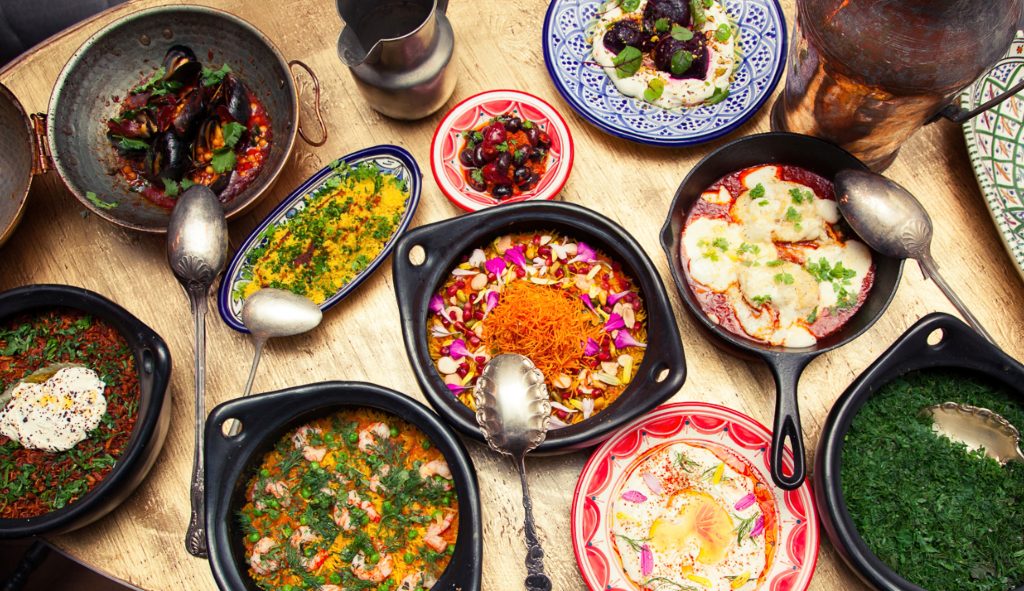The art of food photography takes a fresh, sunlit turn when it embraces the vibrant colors and natural textures of Mediterranean cuisine.
- Mediterranean Food: A Feast for the Eyes
- The Art of Food Photography: Embracing Natural Light
- Setting the Scene for Mediterranean Food Photography
- Experimenting with Angles
- Mediterranean Delicacies: A Visual Tour
- 1. Greek Salad
- 2. Turkish Baklava
- 3. Italian Pizza Margherita
- 4. Lebanese Hummus
- Bringing Mediterranean Dishes to Life through Photography
Mediterranean Food: A Feast for the Eyes
Before we dive into the world of food photography, let’s understand what makes Mediterranean cuisine so visually appealing. The food from this region is rich in colors and diversity. Bright red tomatoes, glossy olives, fresh green herbs, and golden loaves of bread are a feast for the eyes before they ever reach the palate.
Mediterranean food is not just about taste; it’s about the visual experience. The varying textures, from the smoothness of hummus to the grainy feel of whole grain bread, add depth to any photograph.
The Art of Food Photography: Embracing Natural Light
Food photography is about making the dish look as appetizing as it tastes. One of the critical aspects of photographing food, especially Mediterranean cuisine, is to use natural light.
Imagine a bowl of Greek salad: shiny olives, feta cubes, crunchy cucumbers, and juicy tomatoes, bathed in a sunlit glow. This lighting allows every ingredient to stand out, highlighting its freshness and appeal.
Setting the Scene for Mediterranean Food Photography
Creating a beautiful backdrop is essential in food photography. For a Mediterranean setting, use rustic wooden tables, vintage cutlery, and natural fabrics to add to the aesthetic. The key is to keep the background subtle so it doesn’t distract from the food itself.
Experimenting with Angles
Finally, don’t be afraid to experiment with angles. Aerial shots work well for flat dishes like pizza or mezze platter, while side shots can give a good view of layered foods like lasagna. Play around with your camera until you find the angle that best showcases your dish.
Mediterranean Delicacies: A Visual Tour
Let’s embark on a visual journey, exploring some of the most photogenic Mediterranean dishes, shall we?
1. Greek Salad
One of the most vibrant Mediterranean dishes, Greek Salad, also known as Horiatiki, is a perfect blend of fresh veggies like cucumbers, tomatoes, red onions, and olives. Feta cheese, generously sprinkled over the salad, and a simple dressing of olive oil and lemon juice add a finishing touch. The varied textures and colors make it a delight to photograph.
2. Turkish Baklava
Moving on to the desserts, Turkish Baklava is a visual feast. The perfectly layered pastry, glistening with the honey syrup glaze, topped with finely chopped nuts, is mouth-watering. The complexity and texture of this dessert make it a fantastic subject for food photography.
3. Italian Pizza Margherita
No mention of Mediterranean cuisine is complete without the Pizza Margherita. The play of colors – red from the tomatoes, white from the mozzarella cheese, and green from the basil leaves – makes this dish exceptionally photogenic. Using natural light can further enhance the fresh and mouth-watering appeal of this classic dish.
4. Lebanese Hummus
Though hummus may seem simple, it’s all about presentation when it comes to food photography. Garnish with olive oil, a sprinkle of paprika, and a handful of chickpeas or parsley, and you’ve got yourself a beautifully rustic and homely dish, ready for a close-up.
Bringing Mediterranean Dishes to Life through Photography
Food photography isn’t just about taking pictures; it’s about telling a story. Each dish has its unique history and essence, which should shine through in the photograph. The colors, the ingredients, the presentation, all play a vital role in showcasing the dish’s personality.
So, the next time you’re photographing Mediterranean cuisine, remember to let the natural beauty of the food be the star. Use natural light, keep the background simple and complimentary, and don’t shy away from experimenting with angles. Happy photographing!

